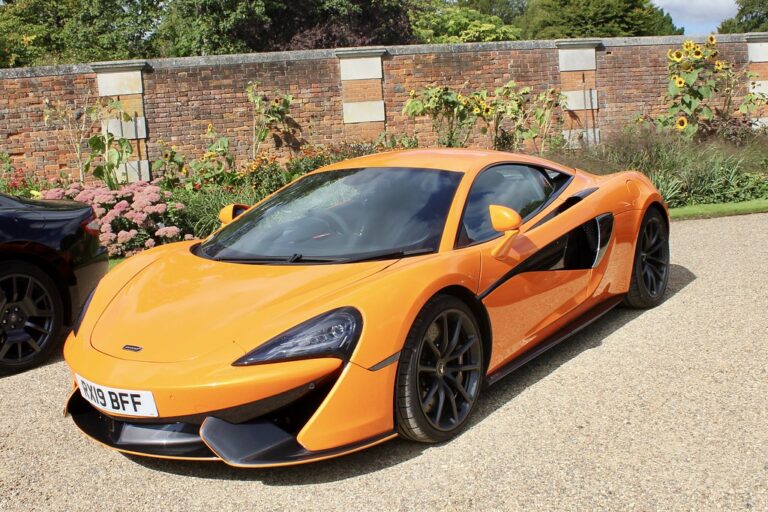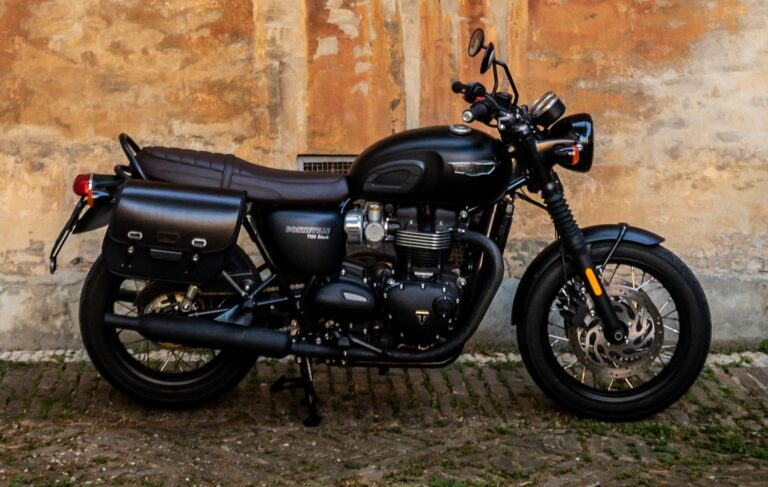Does More CC Mean More Power
In the realm of engines, there’s a persistent belief that size matters – the more cubic centimeters (CC) an engine has, the greater its power output. It’s a notion deeply ingrained in our collective automotive psyche, leading many to believe that a roaring engine with larger displacement inherently equates to superior performance. But is this age-old conception grounded in reality, or is it merely a product of our desire for brute force and a touch more horsepower? In this article, we set out to debunk the myth and explore the true relationship between engine CC and power, without delving into the realm of flowery jargon or unnecessary embellishments. So, let’s dive straight into the heart of the matter: does more CC necessarily equate to more power?
Table of Contents
- The Relationship Between Engine Displacement and Power Output
- Exploring the Impact of Engine Size on Performance
- Unveiling the Truth: Does Increasing Engine Cubic Capacity Result in More Power?
- Analyzing the Correlation between CC and Horsepower
- Determining Optimal Engine Size for Maximum Performance
- Practical Recommendations for Choosing the Right CC for Enhanced Power Output
- FAQs
- Closing Remarks

The Relationship Between Engine Displacement and Power Output
In the realm of automotive engineering, the correlation between engine displacement and power output is an intriguing subject. Engine displacement refers to the total volume swept by all the pistons inside an engine’s cylinders. As common knowledge dictates, the larger the engine displacement, the more powerful the engine tends to be. However, it is essential to delve deeper into this relationship to fully comprehend the intricate dynamics at play.
First and foremost, engine displacement directly affects the size and capacity of the combustion chamber. A larger displacement allows for more room to accommodate the air-fuel mixture, facilitating a more forceful combustion. This stronger combustion generates robust energy, translating into increased power output. Consequently, it is vital to acknowledge that this relationship is not linear. While engine displacement certainly contributes to improved power output, there are other influential factors at work, such as the engine’s design, efficiency, and technological advancements. Inevitably, these components come together harmoniously to optimize power output based on specific driving requirements.
It is worth noting that larger engine displacements often result in increased fuel consumption due to the greater volume of air-fuel mixture combusted. Furthermore, the weight of the engine also tends to increase, affecting overall vehicle performance. Nevertheless, advancements in engine technology have led to the development of more efficient engines with higher power outputs while maintaining reasonable fuel efficiency. These innovative designs often involve a combination of turbocharging, direct fuel injection, and variable valve timing, which enhance power and efficiency simultaneously. Thus, is a multifaceted interplay of various factors that contribute to the overall performance and efficiency of a vehicle.
Exploring the Impact of Engine Size on Performance
When it comes to automobile performance, engine size plays a significant role. The impact of engine size on performance is undeniable, and it’s crucial to understand how different engine sizes can affect a vehicle’s overall capabilities.
A larger engine size often results in greater power and torque output. This means that a vehicle with a bigger engine can generate more force, allowing for faster acceleration and higher top speeds. Additionally, vehicles with larger engines tend to excel in towing and hauling heavy loads, making them an ideal choice for those who require extra power for work or recreational purposes. However, it’s important to note that larger engine sizes may also lead to increased fuel consumption, which is an important factor to consider in terms of both cost and environmental impact.
On the other hand, smaller engine sizes have their own advantages. They are generally more fuel-efficient, making them an excellent option for those seeking better mileage and reduced emissions. Smaller engines can provide a smoother and quieter ride due to their reduced weight and lower levels of vibration. Moreover, vehicles with smaller engines are often more nimble and easier to maneuver, making them suitable for city driving or situations where agility is paramount. However, it’s worth noting that the power output of smaller engines might be limited, which can affect their ability to handle heavy loads or achieve high speeds.
In conclusion, the impact of engine size on performance is a crucial aspect to consider when choosing a vehicle. Whether opting for a larger engine to maximize power or a smaller one for better fuel efficiency, understanding the trade-offs associated with different engine sizes is essential in making an informed decision.
Unveiling the Truth: Does Increasing Engine Cubic Capacity Result in More Power?
When it comes to boosting a car’s performance, the question on every enthusiast’s mind is whether increasing the engine cubic capacity truly leads to more power. Let’s dig deep and uncover the truth behind this age-old debate.
Contrary to popular belief, simply increasing the engine’s cubic capacity does not necessarily guarantee a significant power boost. While it may help to a certain extent, there are several factors that come into play. Here are a few key points to consider:
- Efficiency: Just adding more displacement doesn’t automatically translate into better performance. Engines need to effectively burn fuel, convert it into power, and drive the wheels. Improving the engine’s efficiency through features like direct injection, turbocharging, or variable valve timing can have a far greater impact on overall power output.
- Engine Design: The design and construction of the engine play a crucial role in determining its power capabilities. Factors such as compression ratio, cylinder head configuration, and stroke length can greatly influence the engine’s ability to generate power. Simply enlarging the engine’s size without optimizing these design elements may result in subpar performance gains.
- Matching Components: A larger engine often requires supporting components to handle the increased power. Upgrading fuel systems, cooling systems, and drivetrain components becomes essential to ensure everything works in harmony. Neglecting these upgrades may limit the actual performance gains achieved from a larger cubic capacity.
So, while increasing engine cubic capacity can indeed offer a potential power boost, it is not a magic solution. A well-balanced combination of engine design, efficiency improvements, and matching components is key to maximizing power gains. Ultimately, it’s important to evaluate the specific requirements of your vehicle and consider all factors before deciding to elevate its cubic capacity.
Analyzing the Correlation between CC and Horsepower
Analyzing the correlation between engine displacement, measured in cubic centimeters (CC), and horsepower is essential in understanding the performance capabilities of a vehicle. When examining the relationship between these two factors, several key insights can be gained.
1. Efficiency and Power: One aspect worth exploring is how engine CC impacts the horsepower output. Higher CC values often indicate a larger engine size, which naturally allows for more fuel combustion and, consequently, higher power generation. However, it is important to note that this relationship is not linear, as other factors such as engine design and technology advancements can influence the power output for a given CC.
2. Optimal Balance: Another interesting aspect to consider is finding the optimal balance between engine displacement and power output. It is a common goal in automotive engineering to strike a balance where increasing engine CC leads to improved horsepower without sacrificing efficiency. This balance is crucial for achieving both acceleration and fuel economy. By analyzing different models and engine configurations, manufacturers can identify the sweet spot where the CC and horsepower ratio maximizes performance and minimizes resource consumption.
In conclusion, provides valuable insights into a vehicle’s performance capabilities. Understanding how engine displacement influences power output and finding the optimal balance between these factors allow for improved efficiency and overall better driving experience.
Determining Optimal Engine Size for Maximum Performance
Determining the best engine size for achieving peak performance is crucial for any vehicle enthusiast. Finding the ideal balance between power and efficiency can greatly enhance the driving experience. Here are some key factors to consider when determining the optimal engine size:
1. Vehicle Weight: The weight of your vehicle plays a significant role in its overall performance. Heavier vehicles typically require larger engines to generate sufficient power. Consider the weight of your car and how it could impact its acceleration and speed.
2. Desired Performance: Think about the level of performance you expect from your vehicle. If you’re looking for quick acceleration and high top speeds, a larger engine with more cylinders might be the way to go. On the other hand, smaller engines can provide better fuel efficiency for long drives or daily commutes.
3. Driving Conditions: Take into account the type of driving conditions you typically encounter. If you frequently drive on hilly or mountainous terrain, a larger engine might be necessary to ensure ample power when climbing steep inclines. For city driving or flat highways, a smaller engine can offer sufficient performance without wasting fuel.
4. Usage Purpose: Consider the primary purpose for which you’ll be using the vehicle. Are you mainly driving for commuting, off-roading, or towing heavy loads? Each purpose may require a different engine size to optimize performance in specific situations.
In conclusion, determining the optimal engine size for maximum performance is a crucial decision that depends on various factors such as vehicle weight, desired performance, driving conditions, and usage purpose. By carefully considering each aspect, you can find the perfect balance between power and efficiency to ensure an exceptional driving experience.
Practical Recommendations for Choosing the Right CC for Enhanced Power Output
When it comes to maximizing the power output of your CC (combustion engine), making the right choice is crucial. To help you navigate through the overwhelming options available, we have compiled some practical recommendations. By following these tips, you can ensure that your CC delivers enhanced power and fuel efficiency without any unnecessary guesswork.
Firstly, consider the engine’s requirements. Pay close attention to the manufacturer’s specifications and recommendations. This will give you a good starting point in terms of the CC’s power capabilities. Understand the desired performance parameters and ensure that the CC matches these requirements. Additionally, check the compatibility of the CC with your engine to avoid any compatibility issues that might hinder power output.
Next, evaluate the CC’s design and build quality. Look for well-established manufacturers who offer reliable and high-quality products. Check for any advanced features, such as integrated microprocessors or intelligent cooling systems, which can enhance power output and overall performance. Choose for a CC with a higher voltage and current rating as this can provide a significant boost to your CC’s power output. Additionally, consider the CC’s size and weight. A compact and lightweight CC can help reduce the overall weight of your engine, leading to improved power-to-weight ratio and enhanced performance.
Remember, selecting the right CC for enhanced power output requires careful consideration of the engine’s requirements, compatibility, design, and build quality. By following these practical recommendations, you can make an informed decision and unlock the full potential of your CC.
FAQs
Q: Does an increase in engine displacement (CC) mean more power?
A: Not necessarily. While a larger engine size can generate more power, it’s not the sole determining factor. Other elements like engine design, compression ratio, and technology also contribute to power output.
Q: So, what exactly is CC?
A: CC stands for cubic centimeters, a unit used to measure an engine’s displacement. It represents the total volume that all the engine’s cylinders can accommodate.
Q: Are there any benefits to having a higher CC?
A: A larger engine displacement may result in increased torque, allowing for better acceleration and towing capacity. However, it can also lead to higher fuel consumption and emission levels.
Q: Can a smaller engine with less CC produce more power through forced induction?
A: Yes, it’s possible. Forced induction techniques like turbocharging or supercharging can significantly boost the power output of a smaller engine, rivaling or surpassing larger naturally aspirated engines.
Q: Are there any downsides to increasing CC for power?
A: Yes, there are drawbacks. Larger engines are typically heavier, increasing the overall weight of the vehicle and affecting handling. They can also consume more fuel, resulting in lower fuel efficiency and increased running costs.
Q: Should I choose a car based solely on its CC or power rating?
A: No, it’s essential to consider your specific needs and preferences. Factors such as intended usage, fuel economy, maintenance costs, and vehicle features should all play a role in your decision-making process.
Q: Can I upgrade or modify my car’s engine to increase its power output?
A: Yes, engine modifications can enhance power output, but it’s crucial to approach this carefully. Without proper expertise, modifications may cause damage, reduce reliability, and void warranties. Consult with professionals who have experience in engine tuning and modification.
Q: Is it beneficial to have more power in everyday driving?
A: Having a higher power output can provide quicker acceleration and overtaking capabilities, making everyday driving more enjoyable. However, if you never utilize the extra power, it may not be worth the associated costs.
Q: What are some other factors to consider besides engine displacement when looking for a powerful car?
A: Alongside CC, factors like torque, horsepower, transmission type, gearing ratios, and vehicle weight distribution are significant determinants of a car’s performance. It’s essential to consider these factors collectively when assessing a car’s power.
Closing Remarks
In conclusion, the question of whether more CC (cubic centimeters) means more power has been thoroughly examined. Through our analysis, we have come to understand that while increasing the CC of an engine may lead to a boost in power, it is not the sole determinant. Other factors such as the design, efficiency, and tuning of the engine also play crucial roles. It is essential to consider the overall engineering and components of an engine to comprehend its potential power. So, next time you come across a high CC engine, remember that it’s not just about the numbers, but rather the intricate balance of various elements that determines its true power.







